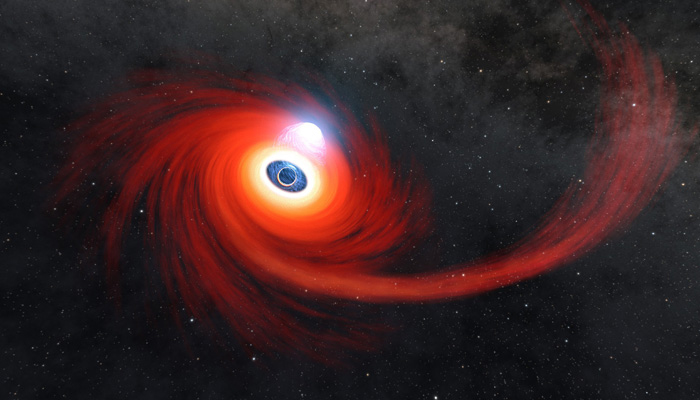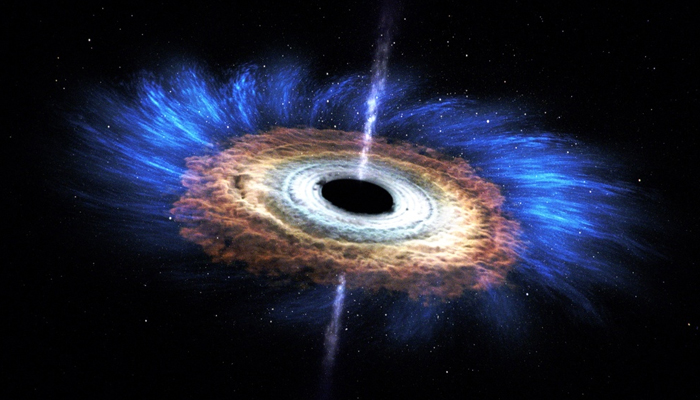What do scientists say about this new brightest-ever black hole?
The brightest-ever object in the universe has been classified as a quasar
February 21, 2024

Astronomers have discovered the most luminous object ever discovered in space with the help of the Very Large Telescope in Chile, according to research published in the journal Nature Astronomy.
The brightest-ever object in the universe has been classified as a quasar — the light-emitting center of a massive galaxy hosting a giant black hole with a mass of 17 billion times that of our Sun.
According to the researchers, the hungry black hole is swallowing a mass equal to the size of our sun on a daily basis.
Named as J0529-4351, the quasar was earlier detected years ago however, its details have been recently revealed after a thorough study.
Christian Wolf of the Australian National University (ANU), told BBC News: "We have discovered an object which has previously not been recognised for what it is; it's been staring into our eyes for many years because it's been glowing at its brightness for longer than humankind has probably existed."

"But we've now recognised it, not as being one of the many foreground stars in our Milky Way but as a very distant object."
Black holes are massive objects present in nearly the centre of nearly every giant galaxy. It also forms when a giant star dies and collapses under its own weight. These space objects are so powerful that they pull inside everything that enters their event horizon. Not even light can escape from their potent pull.
The nearest-to-Earth supermassive black hole Sagittarius A* is located at the centre of the Milky Way galaxy and is four million times huge than our Sun, according to the research paper published in the journal Nature.
The recently identified quasar's light took around 12 billion years to reach the detectors.
The light is coming from an extremely hot accretion disc that measures seven light-years in diameter. It is around 15,000 times the distance from the Sun to the orbit of Neptune.
"In simple language, it means that without these black holes, our galaxy as we know it wouldn't be what it is today. In fact, all galaxies would be very different without their supermassive black holes. In fact, it may even be possible that all galaxies form around these supermassive black holes," ANU PhD student and co-author Samuel Lai told BBC News.









